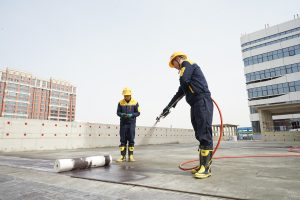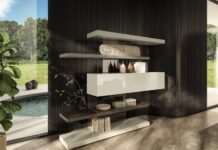Key Takeaways
- Understand the importance of masonry waterproofing as it extends the lifespan of structures.
- Discover various methods and materials used in masonry waterproofing.
- Learn tips on selecting the appropriate waterproofing solution.
- Insights into maintenance practices for sustained waterproofing.
Masonry is renowned for its durability and aesthetic appeal, making it a popular choice for various structures. However, even the most robust masonry can be vulnerable to water damage if not adequately protected. This is where the technique of masonry waterproofing comes into play. Effective waterproofing strategies protect structures from moisture-induced deterioration, ensuring longevity and reduced maintenance costs.
Introduction to Masonry Waterproofing
Masonry structures are made using components like concrete blocks, stone, and brick. They are cherished for their aesthetic and structural qualities. Despite their resilience, however, without proper waterproofing, these materials are susceptible to moisture. Water can seep into masonry through pores and cracks, leading to severe damage over time. This chapter introduces the concept of waterproofing and delves into its essential role in masonry construction.
The Importance of Waterproofing in Masonry Structures
Waterproofing is critical in preserving the structure by preventing water ingress. Water penetration can lead to efflorescence, mold growth, and structural weakening, causing safety and health hazards. Implementing masonry waterproofing enhances a building’s lifespan and maintains its thermal efficiency and aesthetic value.
Common Waterproofing Methods and Materials
The selection of waterproofing methods varies widely depending on factors like environmental conditions and structural requirements. Common strategies include liquid-applied membranes, integral systems, and sheet membranes. Materials such as bituminous coverings, polyurethanes, and silane-siloxane sealers are frequently used for their strong adherence and protective qualities. These approaches are pivotal in modern construction, as highlighted in various waterproofing technologies.
Choosing the Right Waterproofing Solution
Selecting the right waterproofing solution requires carefully analyzing the building’s specific needs. Climate, exposure to environmental elements, and the nature of the masonry material are crucial determinants. While elastomeric coatings might be suited for flexibility, crystalline admixtures offer integral protection. Homeowners and builders must weigh costs, longevity, and compatibility with existing materials when deciding on the appropriate project method.
Steps to Implement Masonry Waterproofing
Proper waterproofing application can determine its effectiveness. The process begins with thorough surface preparation, cleaning, and repairing any existing damage. Following this, the chosen waterproofing material is applied uniformly across the surface to ensure complete coverage. Attention to detail during the application process is vital, as minor oversights can lead to leakages and complications down the line. Additionally, implementing safety procedures protects workers and the materials during application.
Maintenance Tips for Long-lasting Waterproofing
Maintenance is necessary to make waterproofing measures last longer. Regular inspections should be scheduled to detect early signs of damage, such as surface cracks or peeling. When issues are identified, prompt action is necessary to prevent further deterioration. Practices such as keeping drainage systems free of blockages and avoiding direct contact with potentially harmful chemicals can aid in preserving the waterproofing layer intact over time.
Addressing Common Waterproofing Challenges
Challenges in waterproofing, like cracking and efflorescence, can undermine even the best efforts. Understanding the causes of these problems, ranging from flawed application techniques to environmental factors, enables developing effective countermeasures. Using high-quality materials, ensuring meticulous application, and maintaining regular maintenance can largely mitigate these challenges, safeguarding the structural and aesthetic investment.
Conclusion
Masonry waterproofing is a non-negotiable aspect of building construction and maintenance. It protects the structure from moisture’s detrimental effects, ensuring durability, safety, and aesthetic longevity. Through informed selection, proper application, and diligent maintenance, masonry buildings can continue standing securely against the challenges posed by moisture for many years. A proactive approach to waterproofing safeguards the investment and contributes to the environmental sustainability of construction practices.








